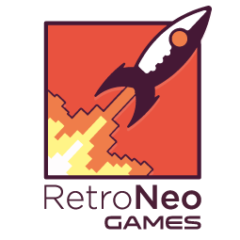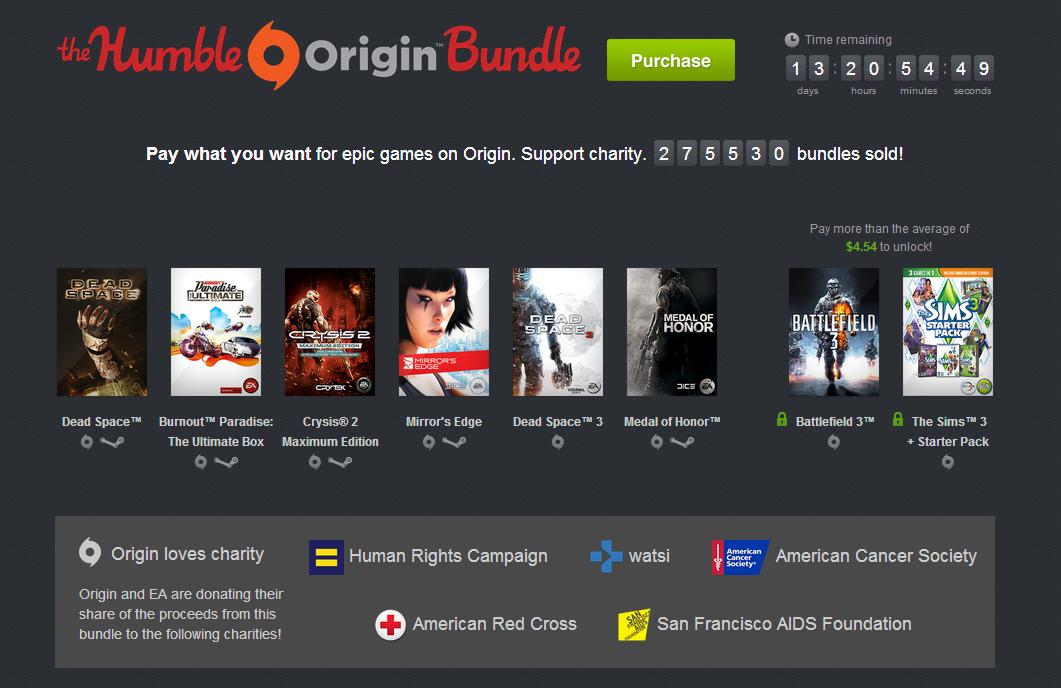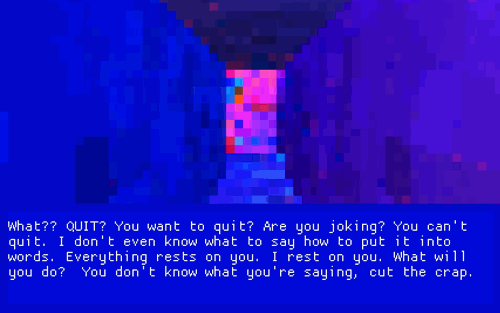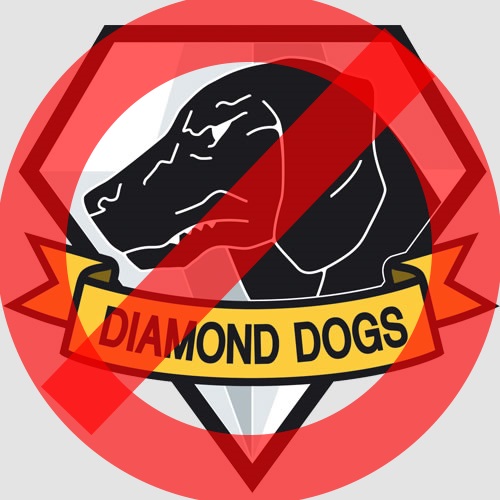
First off, chill! I’m not insulting everyone’s current favourite game. This is only a spoof. I’ve been playing a lot of The Phantom Pain these last three weeks. I love it! I don’t think it’s flawless but certainly a 9/10 from me. It’s excellent! I thought it would be funny to look at Big Boss’ company from the point of view of a disgruntled (and oddly knowledgeable) former client, though. This company looks pretty strange from the outside.
There’s only one extremely minor spoiler and I’ll warn of it in advance. Anything else I say is just reference to the trailer videos and general MGS V gameplay mechanics. Also bear in mind that things I say “in character” of the former client may actually be stretching the truth, or be their misinterpretation, for comedic effect. Hope you enjoy!
An Open Letter Calling For the Boycott of “Diamond Dogs” Private Forces
Date: September 21st, 1984
From: An anonymous former client
I’ve experienced first hand the shady dealings of the Diamond Dogs private forces company. I will detail my grievances in this letter and encourage you to boycott their services, as well as calling on a full international effort to bring the leaders of Diamond Dogs to justice.
Breach of Contract
In my country, a criminal was tried and sentenced to death by a court of his peers. This man subsequently escaped and went on the run, ultimately joining up with one of the private forces (PFs) operating in the Angola-Zaire border region of South-West Africa. When his whereabouts were discovered, my government entered into a contract with Diamond Dogs to fulfil the man’s execution. They informed us that this was part of their “Side Ops” package and that none other than their CEO and mascot “Big Boss” would undertake the contract. This distinction mattered little to us as long as the contract was fulfilled, but they did sell it as if we should be assured of peace of mind.
We paid half up front, as stipulated, and the remaining half when we were informed that the contract had been completed.
Satisfied with the Diamond Dog’s services, we recommended them under their “Combat Deployment” package (does not include Big Boss’ services) as body guards to a neighbouring nation’s dignitaries whilst on a trade mission. At said trade mission, we met the dignitaries with their new escort, and I was dismayed to find that I recognised one of the Diamond Dogs guarding our counterparts. He was the very criminal sentenced to death in my country, and who the Diamond Dogs accepted payment for having killed.
At first I thought that I must be mistaken, but my companions were also convinced and we decided to approach Diamond Dogs on the matter. Diamond Dogs’ XO Kazuhira Miller himself insisted that they had fulfilled their contract to “eliminate” the target, and that the man we had observed was known only as “Killer Wombat”. They would not divulge the date his employment commenced.
I pried further into the matter, proving from our birth records that the man who we sentenced to death had no twins or other siblings. We became convinced that the Diamond Dogs were lying to us and I did some further digging. I interviewed Russian soldiers who had served in Afghanistan, US troops who had been stationed at Camp Omega in Cuba, private forces serving in Africa, and even tracked down some soldiers who had fought both for and against Militaires Sans Frontiers in Costa Rica in 1974. MSF was a military organisation run by Big Boss and Miller until 1975.
What I discovered may shock you. Diamond Dogs are guilty of several breaches of international law, nuclear treaties, human rights, children’s rights, contract law and the Geneva Convention.

Shady Recruitment Practices
It turns out that with our contract, they simply decided to retain our target’s services for their own, and accept our payment while they were at it. Diamond Dogs want to have their cake and eat it too!
This isn’t even an isolated incident. I asked other former clients (through a middle man) if they would reveal who any of their targets were. I then had a contact in the CIA research some of them, and it turns out that several of the targets have also been spotted on assignment with Diamond Dogs. My CIA contact also intimated that one or two had been captured in the past in third world conflict zones. These captives had been questioned (humanely, I’m assured) by CIA operatives. They revealed that their XO and CEO are convinced that virtually all soldiers of the world want to fight for the legendary “Big Boss”, and that they just need some ‘convincing’ that he’s the real deal.
This convincing process takes places in a brig over several days. Exactly what goes on in there is unknown (though we know that the Diamond Dogs’ Tactical Instructor, Revolver “Shalashaska” Ocelot, was an expert in torture and interrogation under the GRU). What we do know is that formerly patriotic soldiers, many of whom with families and children, emerge from that brig with a new name (typically in the form of “Adjective Animal”) and perfectly content to live out the rest of their days inventorying supplies or developing silencers on an abandoned oil platform in the Indian Ocean, which the Diamond Dogs call “Mother Base”.
Whatever the details of the ‘convincing’ process, it’s clear that these men and women suffer from severe cases of Stockholm Syndrome and/or brainwashing.

The Cult of the Leader
Any Diamond Dog you ask will praise the courageous actions and loyalty of their leader Big Boss. Fanatically, so. The man can do no wrong in their eyes. Even the CIA’s captive was convinced that Big Boss would save him, even though Big Boss is now known to have been in a coma at the time.
This cult begs comparison with the phenomena seen in Nazi Germany, Stalinist Russia and Communist China, where Hitler, Stalin and Mao were worshipped unquestioningly by many of their people, ignorant of the failings and atrocities of their leaders. This is the power of propaganda and brainwashing.
While there are reportedly no statues of Big Boss (so far) on Mother Base, the similarity is an eerie one, especially when considering that many of their recruits likely undergo torture before joining the ranks. Reportedly, Boss will often assault a trooper who’s standing at attention. If they’re still conscious and haven’t been thrown off a balcony, they routinely thank him for the beat down, like some perverted version of an S&M scene!
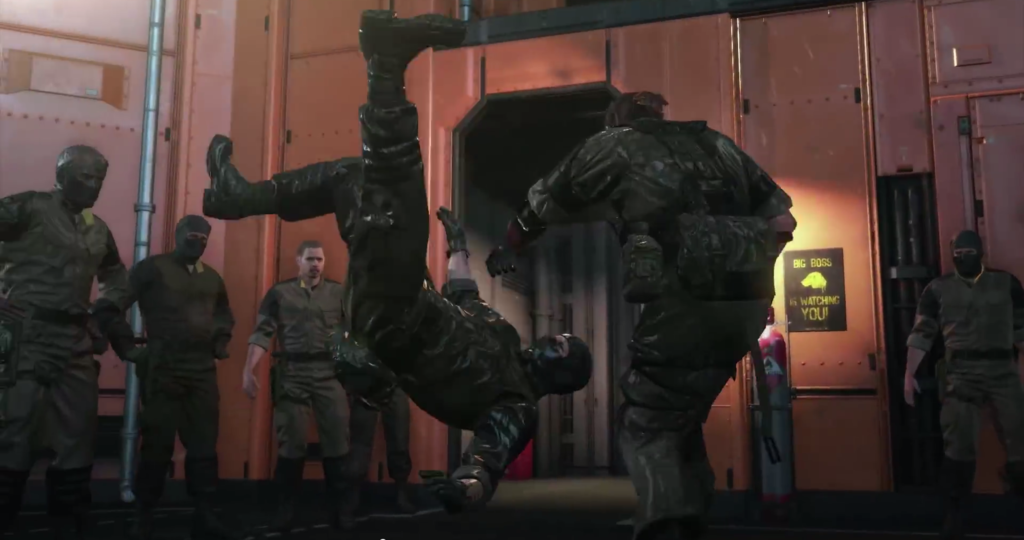
<very minor spoiler in next paragraph concerningearly Chapter 2, Phantom Pain. Skip to the next paragraph if concerned>
The comparison goes further. Mother Base has begun a witch hunt for spies in their ranks. They have literally begun their own Purge. Each man and woman is encouraged to report on their neighbour and posters are visible wherever one looks declaring that “Big Boss is Watching You”. It seems that George Orwell’s nightmare scenario in the novel 1984 has been truly realised for those on Mother Base in this, the year 1984!
All this from a private company! If you suspect disloyalty from your employees, you fire them, not spy on them!! Who do they think they are? Fucking Konami?! <I know I’m writing this as if it’s set in 1984, but I couldn’t resist. #fuckkonami :P>
A Rogue Nuclear Power?
This gets worse! Even though the waters where Mother Base is situated belong to The Seychelles, and are only technically on loan to Diamond Dogs, they declare themselves an independent military nation. This would almost be cute, like a marketing ploy, if not for the fact that, according to multiple sources, Diamond Dogs may possess a nuclear weapon!!
Reportedly, they possessed one in 1975 on the MSF base in the Caribbean. A nuclear inspection was to be carried out around the same time that that base was mysteriously destroyed, so the report is unsubstantiated, but multiple sources claim the same things. That A) Big Boss and Miller’s MSF did posess a nuclear weapon in 1975,
B) The US Intelligence backed an operation to eliminate this threat near their borders,
C) The weapon was never recovered,
and D) Diamond Dogs are currently attempting to procure or create another nuclear weapon!
Are They Insane?!
Diamond Dogs are clearly a suspect organisation, but are they completely bat-shit insane? I have learned the following, which may assist you in making up your mind:

- Big Boss has been known to enter battle wearing a novelty chicken hat and armed only with a water pistol!
- This is an organisation, claiming to be a country, who have named themselves after a David Bowie album! This would almost be amusing if it weren’t for the scary fact that Diamond Dogs are no heroes. They are a rebel rebel organisation which, if they possess a nuclear weapon, are putting this Cold War under pressure!
- They have their own zoo!
- Big Boss has shrapnel implanted in his skull, impinging on his optical nerve. A medical expert has informed me that any pressure on the shrapnel would leave Big Boss prone to hallucinations. This is a man who carries around a rocket launcher habitually! He’s actually been known to shower with it still on!
- Former MSF soldiers, when interviewed, report having heard Big Boss describe his battles with phychics, a man who could control insects, a sniper who could survive by photosynthesis, a Russian Colonel who could harness the power of electricity through his body, giant killer robots and even a ladder! Is this all hyperbole or is Big Boss actually mental?!
- Rather than allow their dead comrades’ ashes to be scattered (allowing them to rest in peace) the Diamond Dogs literally attempt to form diamonds from the ashes and carry them back into battle with them! Before making this policy change, in the middle of the burial ceremony, Big Boss was observed to take the ashes he was about to scatter and smear them all over his face!

- Diamond Dogs frequently ride into battle blaring music from their Blackhawk helicopter’s megaphones, just like in the movie Apocalypse Now from 1979. I wonder does Big Boss share a kindred spirit with the insane Colonel Kurtz (Marlon Brando) from that movie.
- They insist on being paid in GMP (Gross Military Product, apparently) which is their own completely-made-up currency with no apparent backing or physical note/coin.
- Their budgeting department is also certifiable! They believe that it will cost them 85,000 GMP to research and manufacture a simple suppressor for one of their varieties of pistol. However, developing their proposed FAKEL grenade launcher from scratch will cost only 45,000 GMP. Most astonishingly, however, they budget only 180,000 GMP (a little over twice the amount for the silencer) for the construction of an ENTIRE BASE PLATFORM, similar in size to an oil rig, WITH a connecting bridge over a mile long!
“Non-Lethal”
If you don’t heed my advice and you decide to hire Diamond Dogs anyway, be very wary of hiring them for any non-lethal extraction mission. Operatives are known to use rubber bullets fired from shotguns or SMGs, often directly at the face of a target. This has been proven to be potentially lethal, as observed after many a soccer riot worldwide.

Their favoured approach, though, is to fire a tranquilliser dart at the target’s face. They report that this is more effective at quickly incapacitating a target. I’ll say it would be! The shock of having a dart enter your eye socket at the high velocity given to it by a long-range rifle (or even the pistol) would likely kill a man! Diamond Dogs operatives remain convinced, apparently, that their targets are only sleeping.
Other “non-lethal” approaches employed include dropping a crate out of a helicopter onto a target’s head, pulling them backwards out of a 20 ft high guard tower, or trampling them with a horse.
If you want to be sure to keep your target alive, DON’T HIRE DIAMOND DOGS!
Aggressive Expansion and Hostile Takeovers
While Diamond Dogs have an agreement with the Seychelles government for their base in those waters, no such agreements exist for their ‘Forward Operating Bases’ which have been discovered in the Atlantic and Pacific Oceans, with more likely to be hidden elsewhere.
Further, it’s been reported by other Private Forces companies (legitimate businesses, many of them, not mercenaries) that Diamond Dogs use their FOBs to raid personnel and materials from nearby competing PF bases like common pirates! I know that war is business and vice versa, but directly attacking a competitor is a morally bankrupt move in any industry! Even the war one!
Something is rotten in Diamond Dogs PF

I would urge all of Diamond Dogs’ clients to terminate their business with them immediately. I also urge the UN to carry out weapons inspections on Mother Base and to enforce the closure of Diamond Dogs’ Forward Operating Bases. I plead with the international banks to freeze their assets (unless their assets are in GMP, in which case I’d love to see how that currency goes on its own), and I ask for Amnesty International to help identify abducted soldiers, security contractors and (reportedly) even child soldiers, assist in their rehabilitation, and send them home!
Big Boss and Kazuhira Miller must answer for their crimes! Boycott this dangerous organisation immediately and help bring them to justice!
Thank you
From the pen of C̶i̶p̶h̶.. Anonymous
——————————————————–
Hope you enjoyed it folks! This is the first time I’ve blogged a fictional or comedy piece. Do please leave your feedback.
Until next time..
